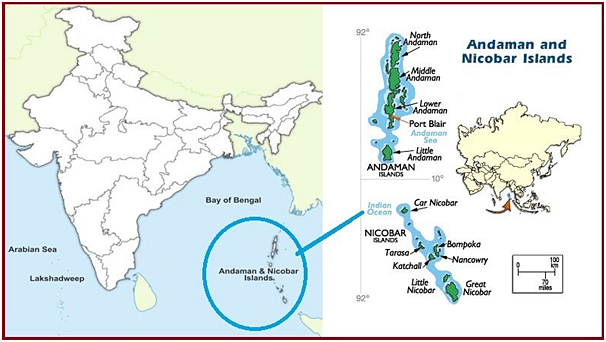Free Courses Sale ends Soon, Get It Now


Free Courses Sale ends Soon, Get It Now



Copyright infringement not intended
Picture Courtesy: https://swarajyamag.com/infrastructure/explained-development-plan-of-great-nicobar-islands
Context: A group of experts have written to the National Commission of Scheduled Tribes (NCST) expressing concerns about the Great Nicobar Project in India.
Details
About the Great Nicobar Project
Violation of Constitutional Mandate
Environmental and Cultural Concerns
Legal Lacunae in Project Clearances
Lack of Consultation and Inclusion
Advocacy for Tribal Rights and Environmental Conservation
|
Great Nicobar Island ●The Great Nicobar Island, part of India's Andaman and Nicobar Islands, is a region of ecological and cultural significance, hosting unique biodiversity and indigenous communities. ●The island has been recognized by Indian mariners since the era of the seafaring Chola dynasty. ●Recorded as "Cui Lan Island" during the voyages of Zheng He in the 15th century. ●Features rivers flowing southward, and a main north-south range with Mount Thullier as its highest point. ●Home to unique and endemic species like the Nicobar scrubfowl, edible-nest swiftlet, Nicobar long-tailed macaque, saltwater crocodile, giant leatherback sea turtle, and others. ●Inhabited by the Shompen people, reflecting a rich cultural heritage tied to the island's ecology and resources. ●Indira Point, formerly Pygmalion Point, is India's southernmost point, named in honour of Indira Gandhi. The 2004 Indian Ocean tsunami caused significant subsidence, affecting the coastline and the Indira Point lighthouse. |
Conclusion
Must Read Articles:
National Commission for Scheduled Tribes (NCST)
Source:
|
PRACTICE QUESTION Q. Which of the following tribes is known for being the most isolated and resistant to outside contact in the Andaman and Nicobar Islands? A) Jarawa B) Sentinelese C) Onge D) Shompen Answer: B |
© 2024 iasgyan. All right reserved